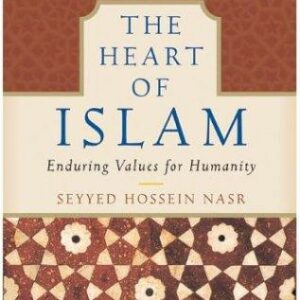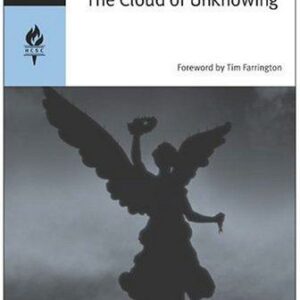The Journey of Humanity
$18.00
| Title | Range | Discount |
|---|---|---|
| Trade Discount | 5 + | 25% |
- Description
- Additional information
Description
A landmark, radically uplifting account of our species’ progress, from one of the world’s preeminent thinkers.
“Unparalleled in its scope and ambition…All readers will learn something, and many will find the book fascinating.’—The Washington Post
“Breathtaking. A new Sapiens!” —L’Express
“Completely brilliant and utterly original … a book for our epoch.”—Jon Snow, former presenter, Channel 4 News (UK)
“A wildly ambitious attempt to do for economics what Newton, Darwin or Einstein did for their fields: develop a theory that explains almost everything.” —The New Statesman
“An inspiring, readable, jargon-free and almost impossibly erudite masterwork.” —The New Statesman
“[A] sweeping overview of cultural, technological and educational forces… Its breadth and ambition are reminiscent of Diamond’s Guns, Germs, and Steel and Harari’s Sapiens.”—Financial Times
“Astounding in scope and insight…provides the keys to the betterment of our species.”—Nouriel Roubini, author of Crisis Economics
“A masterful sweep through the human odyssey…. If you liked Sapiens, you’ll love this.” —Lewis Dartnell, author of Origins
“Oded Galor’s attempt to unify economic theory is impressive and insightful.” —Will Hutton, The Guardian
“A great historical fresco.” —Le Monde
“It’s a page-turner, a suspense-filled thriller full of surprises, mind-bending puzzles and profound insights!”—Glenn C. Loury, author of The Anatomy of Racial Inequality
“Brilliantly weaves the threads of global economic history. A tour de force!”—Dani Rodrik, author of Straight Talk on Trade
In a captivating journey from the dawn of human existence to the present, world-renowned economist and thinker Oded Galor offers an intriguing solution to two of humanity’s great mysteries.
Why are humans the only species to have escaped—only very recently—the subsistence trap, allowing us to enjoy a standard of living that vastly exceeds all others? And why have we progressed so unequally around the world, resulting in the great disparities between nations that exist today? Galor’s gripping narrative explains how technology, population size, and adaptation led to a stunning “phase change” in the human story a mere two hundred years ago. But by tracing that same journey back in time and peeling away the layers of influence—colonialism, political institutions, societal structure, culture—he arrives also at an explanation of inequality’s ultimate causes: those ancestral populations that enjoyed fruitful geographical characteristics and rich diversity were set on the path to prosperity, while those that lacked it were disadvantaged in ways still echo today.
As we face ecological crisis across the globe, The Journey of Humanity is a book of urgent truths and enduring relevance, with lessons that are both hopeful and profound: gender equality, investment in education, and balancing diversity with social cohesion are the keys not only to our species’ thriving but to its survival.Praise for The Journey of Humanity
Honors & Awards:
Best Philosophy and Ideas Books 2022 —The Times
Hottest New Books for Great Escape —The Guardian
Berlin’s Best Non-Fiction 2022 —Exberliner Magazine
Author of the year 2022 – CITIC Publishers, China
The Yaesu Book Award 2023 (Grand Prize) —Japan
“The best book to read on your summer holidays.” —Irish Independent
Five Best Economics Books of 2022 —Five Books
Newspapers:
“Breathtaking. A new Sapiens!” —L’Express
“A great historical fresco.” —Le Monde
“Unparalleled in its scope and ambition…All readers will learn something, and many will find the book fascinating.” —The Washington Post
“Fascinating book…Highly exciting journey through the economic history of mankind from the Stone Age to the present day.” —Frankfurter Allgemeine
“An optimist’s guide to the future … Oded Galor’s ‘Sapiens’-like history of civilisation predicts a happy ending for humanity.” ―The Guardian
“A wildly ambitious attempt to do for economics what Newton, Darwin, or Einstein did for their fields: develop a theory that explains almost everything. An inspiring, readable, jargon-free and almost impossibly erudite masterwork, the boldest possible attempt to write the economic history of humanity.” —The New Statesman
“An evidence-based antidote to doomscrolling…. The book is highly persuasive: Galor builds his case meticulously, always testing his assumptions against the evidence, and without the sense of agenda-pushing that accompanies other boosterish thinkers…. An analysis of the human condition that leads not to a counsel of despair, but a new set of tools [he believes] can help build a better future.” —The Guardian
“Sweeping overview of cultural, technological, and educational forces that let countries break out of the poverty trap and become wealthy. Its breadth and ambition are reminiscent of Diamond’s Guns, Germs, and Steeland Harari’s Sapiens.”—Financial Times
“[A] deeply rewarding and fascinating exploration.”—The Spectator
I…[was] taken aback by his imagination and verve… great sections of Galor’s book are to be applauded… his optimism about humanity shines through ― Observer
“An elegantly written and accessible book.” —Irish Times
“Ambitious bid to explain society’s economic development… impressive and insightful.” —The Guardian
“It explores how ancient factors like geography, culture and diversity impact today’s wealth inequality… Uses entertaining narratives to explain how this works.” —Forbes
“Just like the theories that promise to tie together all of physics or any other science, Galor’s work aims to make the world’s economic trajectory seem logical, even inevitable.”—American Banker
“Big ideas worth attention.”—Kirkus
“In lucid, accessible prose, Galor ingeniously traces obscure influences over centuries…. This engrossing history reveals that subtle causes can have astounding effects.”—Publishers Weekly
“In The Journey Of Humanity, Oded Galor argues that climate policy should not be restricted to cutting carbon but should also involve ‘pushing hard for gender equality, access to education and the availability of contraceptives, to drive forward the decline in fertility.’ India will do well to heed that advice.”—The New Indian Express
Writers and Scholars:
“Astounding in scope and insight, The Journey of Humanity provides a captivating and revelatory account of the deepest currents that have shaped human history and the keys to the betterment of our species.”—Nouriel Roubini, Professor Emeritus, NYU, and author of Crisis Economics: A Crash Course in the Future of Finance
“A masterful sweep through the human odyssey, from the origin of our species to the founding of civilizations and the major transitions towards the making of the modern world. Galor answers the ultimate mystery: What historical currents account for the staggering inequality in the wealth of nations today? Exquisite, eloquent and effortlessly erudite—if you liked Sapiens, you’ll love this.”—Lewis Dartnell, author of Origins: How the Earth Shaped Human History
“A completely brilliant and utterly original account of humanity’s transit from crude beginnings to a deeply divided planet. A vastly readable insight into why our world is as it is. A book for our epoch.”—Jon Snow, former anchor of Channel 4 News (UK)
“A wonderfully clear-sighted perspective on progress, past and future, which is essential to tackling today’s big challenges—potentially catastrophic climate change and inequality.”—Diane Coyle, author of Cogs and Monsters
“This deeply argued book brilliantly weaves the threads of global economic history— technology, demography, culture, trade, colonialism, geography, institutions—to deconstruct the rich tapestry that is the modern world. A tour de force!”—Dani Rodrik, Ford Foundation Professor of International Political Economy at Harvard’s John F. Kennedy School of Government and author of Straight Talk on Trade
“A magisterial account of the evolution of human civilization from its prehistoric origins to the present day. The Journey of Humanity is beautifully written, in elegant and accessible prose. It’s a page-turner, a suspense-filled thriller full of surprises, mind-bending puzzles and profound insights!”—Glenn C. Loury, Merton P. Stoltz Professor of the Social Sciences, Brown University, and author of The Anatomy of Racial Inequality
“Not only a succinct, unified theory of economic growth since modern humans evolved, but also an engaging and optimistic answer to anyone who thinks that poverty and inequality will always be with us.”—Ian Morris, Stanford University’s Jean and Rebecca Willard Professor in Classics and author of The Measure of Civilization
“Incredibly wide-ranging and detailed historical and even anthropological examination of the myriad factors that have brought success and failure to nations…. Lively and learned.” —Tim Hazledine
“I am in awe of Oded Galor’s attempts to explain inequality today as a consequence of such profound forces. A remarkable contribution to our understanding of this mammoth dilemma.”—Jim O’Neill, author of The Growth Map
Praise for Oded Galor and his Unified Growth Theory
“Galor’s project is breathtakingly ambitious. He proposes a fairly simple, intensely human-capital-oriented model that will accommodate the millennia of Malthusian near-stagnation, the Industrial Revolution and its aftermath of rapid growth, the accompanying demographic transition, and the emergence of modern human-capital-based growth. And the model is supposed to generate endogenously the transitions from one era to the next. The resulting book is a powerful mixture of fact, theory, and interpretation.”—Robert Solow, Nobel Laureate in Economics
“Big Science at its best. It grapples with some of the broadest questions in social science, integrating state-of-the-art economic theory with a rich exploration of a wide range of empirical evidence. Galor’s erudition and creativity are remarkable, and the ideas embodied in this book will have a lasting effect on economics.” —Steven N. Durlauf, Steans Professor in Educational Policy, University of Chicago, and editor, Journal of Economic LiteratureOded Galor is Herbert H. Goldberger Professor of Economics at Brown University and the founding thinker behind Unified Growth Theory, which seeks to uncover the fundamental causes of development, prosperity, and inequality over the entire span of human history. He has shared the insights of his lifetime’s work in this field at some of the most prestigious lectures around the globe and has now distilled those discoveries into The Journey of Humanity, which is being published in twenty-eight languages worldwide.
1
First Steps
Climbing the winding path towards the Mount Carmel Caves in modern-day Israel, it is possible to envision the majestic environment that would have surrounded this site in prehistoric times. The Mediterranean climate would have been pleasant across the seasons, with moderate temperature fluctuations. The creek snaking through the mountains in the adjacent verdant valley would have been a source of potable water. The forests beside the mountain range would have been suitable for hunting deer, gazelles, rhinoceroses and boar, and out in the wild, in the open areas abutting the narrow coastal plain and the Samarian mountains, there would have grown prehistoric species of cereals and fruit trees. The warm climate, ecological diversity and raw materials surrounding the Mount Carmel Caves would have made them ideal homes for numerous bands of hunter-gatherers over the millennia. Indeed, remains unearthed in these ancient caves, now a UNESCO World Heritage Site of human evolution, attest to a sequence of prehistoric settlements over hundreds of thousands of years, as well as tantalising potential encounters between Homo sapiens and the Neanderthals.
Archaeological findings from this and other sites across the globe indicate that archaic and early modern humans slowly but steadily acquired new skills, mastered the use of fire, developed increasingly sophisticated blades, handaxes, and flint and limestone tools, and created artworks. A key driver of these cultural and technological advancements, which came to define humankind and set us apart from other species, was the evolution of the human brain.
Genesis
The human brain is extraordinary: large, compressed and more complex than the brain of any other species. It has tripled in size over the last six million years, with most of this transformation occurring 200,000-800,000 years ago, largely before the emergence of Homo sapiens.
Why have the capabilities of the human brain expanded so significantly over the course of the history of the human species? At first glance, the answer might appear self-evident: having an advanced brain has clearly allowed us to achieve levels of security and prosperity that no other species on Earth has managed to attain. Yet the reality is considerably more intricate. If a brain resembling the human one is indeed so unambiguously beneficial for survival, why has no other species developed a similar brain over billions of years of evolution?
Consider this distinction for a moment. Eyes, for example, developed independently along several evolutionary tracks. They evolved among vertebrates (amphibians, birds, fish, mammals and reptiles), cephalopods (including cuttlefish, octopuses and squid), as well as in a simpler form – ocelli – in invertebrates such as bees, spiders, jellyfish and sea stars. The distant ancestor of all these species, which lived more than 500 million years ago, seems to have had only basic light receptors, capable of distinguishing light from dark.Nevertheless, since accurate vision has provided a distinct survival advantage in different environments, complex eyes evolved independently in some of these different groups, uniquely adapted in each case to the individual species’ habitat.
This phenomenon, whereby similar traits evolved independently in different species rather than emerging from an existing trait in a common ancestor, is known as convergent evolution. There are numerous other examples, such as the development of wings among insects, birds and bats, and the comparable body shape that evolved in fish (shark) and marine mammals (dolphins) to suit life underwater. Evidently, various species have acquired similar beneficial traits by independent means – but not brains capable of crafting literary, philosophical and artistic masterpieces, or inventing the plough, the wheel, the compass, the printing press, the steam engine, the telegraph, the aeroplane and the internet. Such a brain has only evolved once – in humans. Why is such a powerful brain so rare in nature, despite its apparent advantages?
The resolution of this puzzle partly lies in the brain’s two major drawbacks. First, our brain exhausts enormous amounts of energy. It consists of only 2 per cent of the body’s weight while consuming 20 per cent of its energy. Second, its large size makes it difficult for a baby’s head to pass through the birth canal. Consequently, the human brain is more compressed or ‘folded’ than other species’ brains, and human babies are born with ‘half-baked’ brains that need years of fine-tuning to reach maturity. Human infants are therefore helpless: while the young of many other species can walk by themselves shortly after being born, and are rapidly able to acquire their own food, humans need a couple of years before they can walk by themselves in a stable fashion, and many more before they can reach material self-sufficiency.
Given these drawbacks, what led to the development of the human brain in the first place? Researchers have argued that several forces may have contributed jointly to this process. The ecological hypothesis suggests that the human brain evolved as a result of the exposure of our species to environmental challenges. As the climate fluctuated and nearby animal populations adapted accordingly, prehistoric humans with more advanced brains would have been better able to identify new food sources, devise hunting and gathering strategies, and develop cooking and storage technologies that allowed them to survive and thrive in the shifting ecological conditions of their local habitat.
The social hypothesis, in contrast, maintains that the growing need to cooperate, compete and trade within complex social structures gave a more sophisticated brain, with its better ability to understand the motives of others and anticipate their reactions, an evolutionary advantage.Likewise, being able to persuade, manipulate, flatter, recount and amuse – all of which would benefit one’s social standing, as well as conferring advantages in themselves – spurred the development of the brain and the capacity for speech and discourse.
The cultural hypothesis, meanwhile, highlights the ability of the human brain to assimilate and store information, allowing it to be passed from one generation to the next. According to this viewpoint, one of the unique advantages of the human brain is its capacity to learn efficiently from the experiences of others, facilitating the acquisition of habits and preferences that boost survival in diverse settings without relying on the far slower process of biological adaptation.In other words, human babies may be physically helpless but their brains are equipped with unique learning capacities, including the ability to grasp and retain the behavioural norms – the culture – that enabled their ancestors to survive and will help their descendants to prosper.
One mechanism that may have further contributed to the development of the brain is sexual selection. It could be that humans developed a preference for mates with more advanced brains, even in the absence of overt evolutionary advantages of the brain itself. Perhaps these intricate brains attested to invisible qualities that were important for protecting and raising children, and potential mates were able to infer these qualities from perceptible attributes such as wisdom, articulation, quick thinking or a sense of humour.
The evolution of the human brain was the main impetus for the unique advancement of humanity, not least because it helped bring about technological progress – ever more sophisticated ways to turn the natural materials and resources around us to our advantage. These advancements, in turn, shaped future evolutionary processes, enabling human beings to adapt more successfully to their shifting environments and to further advance and utilise new technologies - an iterative and intensifying mechanism that has led to ever greater technological strides being made.
In particular, it is thought that developments in the mastery of fire, which allowed early humans to begin cooking their food, spurred additional growth of the brain by reducing the energy required to chew and digest, thus making calories more accessible and freeing space in the cranium previously occupied by jaw bones and muscles. This reinforcing cycle may have fostered further innovation in cooking technologies, which may have led to further growth of the brain.
Yet our brain is not the only organ that sets us apart from other mammals. The human hand is another. In conjunction with our brains, our hands too evolved partly in response to technology, specifically the benefits of creating and utilising hunting tools, needles and cooking gear. In particular, when the human species mastered the technology to carve stones and make wooden spears, the survival prospects of those who could use them forcefully and accurately improved. Better hunters could support their families more reliably, and therefore raise more children to adulthood. The intergenerational transmission of these skills increased the share of proficient hunters in the population, and the advantages of further innovations, such as sturdier spears and, later, stronger bows and sharper arrows, contributed to the evolutionary advantage of these hunting skills.
Positive feedback loops of a similar nature have emerged throughout our history: environmental changes and technological innovations enabled population growth and triggered the adaptation of humans to their changing habitat and their new tools; in turn, these adaptations enhanced our ability to manipulate the environment and to create new technologies. As will become apparent, this cycle is central to understanding the journey of humanity and to resolving the Mystery of Growth.
Exodus from the Cradle of Humankind
For hundreds of thousands of years, the human species roamed in small bands of hunter-gatherers in Africa, developing complex technological, social and cognitive capabilities along the way. As prehistoric humans became ever better hunters and gatherers, their population in the fertile regions of Africa increased significantly, ultimately reducing the living space and natural resources available to each of them. Thus, once climatic conditions permitted, humans started branching out to other continents in search of additional fertile grounds.
Homo erectus, arguably the first hunter-gatherer species of human, spread out to Eurasia nearly two million years ago. To date, the oldest fossils of early Homo sapiens to have been discovered outside of Africa are 210,000 years old (uncovered in Greece), and 177,000-194,000 years old (found on Mount Carmel in northern Israel). Yet it appears that the descendants of these first modern humans to leave Africa became extinct or retreated into Africa due to adverse climatic conditions during the glacial period.
It was in Africa, then, about 150,000 years ago that the most recent (matrilineal) ancestor of all living humans, Mitochondrial Eve, emerged. Although there were of course numerous women in Africa at the time, their lineages ultimately became extinct. All humans on Planet Earth today are descended from this one African woman.
The widely accepted ‘Out of Africa’ hypothesis suggests that the current population of anatomically modern humans across the globe descends predominantly from a more significant migration of Homo sapiens from Africa as early as 60,000-90,000 years ago. Humanity flocked to Asia via two routes: the northern via the Nile Delta and the Sinai Peninsula to the eastern Mediterranean region known as the Levant, and the southern one via the Bab-el-Mandeb Strait at the mouth of the Red Sea into the Arabian Peninsula (Fig. 3). The first modern humans reached South East Asia more than 70,000 years ago, Australia 47,000-65,000 years ago, and Europe nearly 45,000 years ago. They settled Beringia approximately 25,000 years ago, crossing the land bridge over the Bering Strait during several periods of the Pleistocene Ice Age, and entered deeper into the Americas 14,000-23,000 years ago.
These waves of migrations out of Africa contributed to the size and the diversity of the human population across Planet Earth. As prehistoric humans settled new ecological niches, they enjoyed access to new grounds for hunting and gathering and started to multiply more rapidly. Meanwhile, their adaptation to diverse new environments led to greater human and technological diversity, fostering the spread and cross-pollination of innovations, and leading to further population growth.
Ultimately, however, population growth led to the same scarcity of fertile land and resources that had spurred the migration from Africa in the first place. Despite their new tools and techniques, humans’ living standards gradually reverted towards the subsistence level. The inability to sustain the growing population, as well as climatic changes, eventually induced humanity to explore an alternative mode of subsistence – agriculture.
Early Settlement
Nearly 12,000 years ago, as the climate gradually warmed in the aftermath of the latest glacial period, Homo sapiens experienced a dramatic transformation. Across the world, people gradually swapped their nomadic wandering for sedentary lifestyles, and began to make great strides in art, science, writing and technology.
Evidence from the Natufian culture (13,000-9500 BCE), which flourished in the Levant, suggests that in some places the transition to permanent dwellings predated the onset of agriculture. Despite being predominantly hunter-gatherers, the Natufians lived in stable residences, made typically of a drystone foundation with brushwood superstructure. Each settlement contained up to a few hundred people, who ventured out for hunting expeditions and for gathering native wild crops. But for the majority of the world’s human population at the time, it was the transition to agriculture that was the primary inducement to sedentism.
The Agricultural Revolution, also known as the Neolithic Revolution, first emerged in the Fertile Crescent – a lush region along the Tigris and Euphrates rivers, down the eastern Mediterranean coast, and around Egypt’s Nile Delta – which was abundant in a wide variety of domesticable species of plants and animals. Agriculture emerged independently, about 10,000 years ago, in South East Asia, and from these distinct locations it spread swiftly across the Eurasian land mass. The rapid diffusion of agricultural practices within this vast region was enabled by the east-west orientation of these continents and the feasibility of the dispersal of plants, animals and technologies along similar lines of latitude without encountering major natural obstacles.
In contrast, as argued by the American geographer and historian Jared Diamond in his Pulitzer Prize-winning book Guns, Germs and Steel, sub-Saharan Africa and the Americas, which contained far fewer domesticable species of plants and animals, experienced the transition to agriculture significantly later. Despite an early onset of agriculture in Meso-America and in some regions of Africa, the diffusion of agricultural practices was slower within these areas because the north-south orientation of these continents created major differences in climate and soil between regions. Moreover, the Sahara and the largely impassable tropical rainforests in Central America served as natural barriers to this diffusion process.
Nonetheless, after hundreds of thousands of years of painfully slow technological and social change, this process – the transition from hunter-gatherer tribes to agricultural societies, and from nomadic lifestyle to sedentary living – spread within a few thousand years to most of humanity. During the Neolithic Revolution, humans domesticated a wide range of wild plants and animals around the world. Wheat, barley, peas, chickpeas, olives, figs and date palms, as well as sheep, goats, pigs and pigeons, were first domesticated in the Fertile Crescent. Grapes and pomegranates in the nearby Transcaucasian region. Rice, buffalo and silkworms were domesticated in China, and ducks in South East Asia. Sesame, aubergines and zebus in the Indian subcontinent. Sorghum, yams, coffee and donkeys in Africa. Sugar cane and bananas in New Guinea, and maize, beans, squash and potatoes, as well as turkeys, llamas and alpacas, in the Americas.
US
Additional information
| Weight | 7.4 oz |
|---|---|
| Dimensions | 0.6400 × 5.1800 × 7.9400 in |
| Imprint | |
| ISBN-13 | |
| Author | |
| Audience | |
| BISAC | |
| Subjects | cultural anthropology, sociology books, history books for adults, history gifts, gifts for history buffs, historical books, history buff gifts, history lovers gifts, history teacher gifts, civilization, human evolution, social engineering, historical nonfiction, civilizations, homosapiens, human evolution books, books for history lovers, economics, philosophy, anthropology, psychology, business, science, innovation, technology, Sociology, history, evolution, HIS037000, history books, world history, anthropology books, science books, SOC002010 |
| Format |











